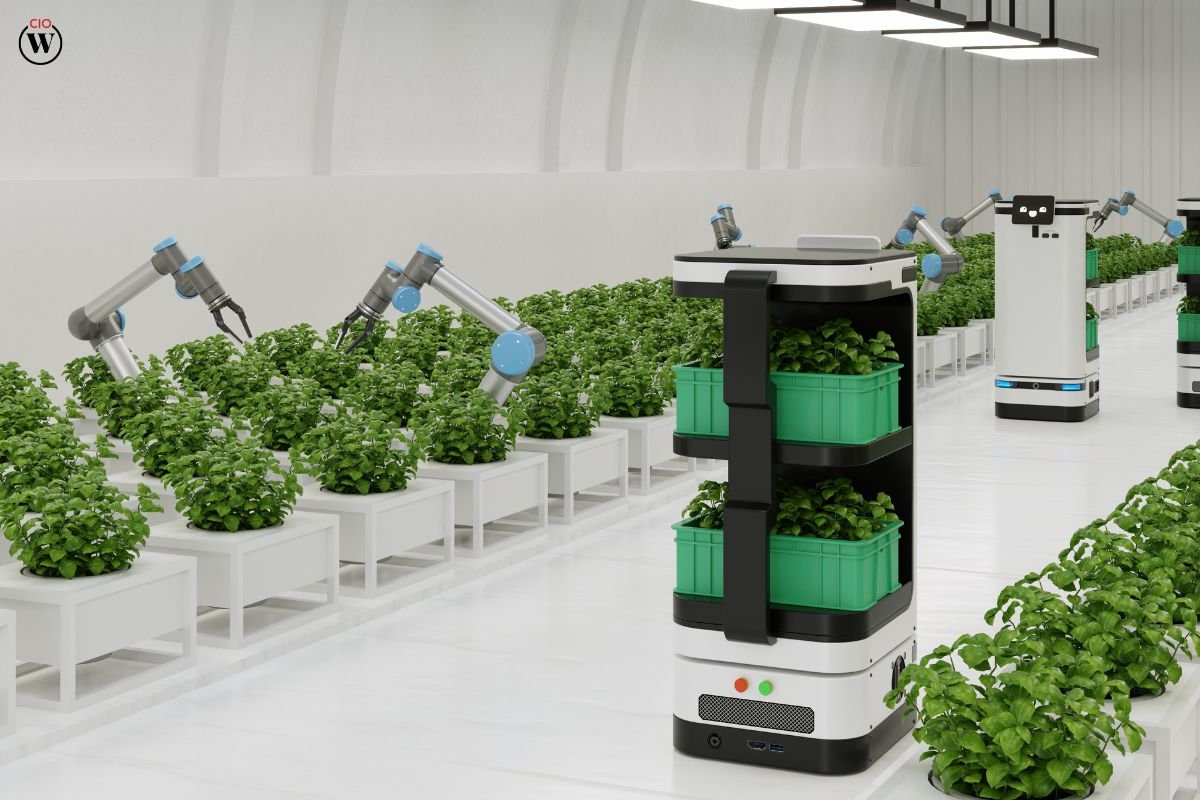Innovation is the prominent factor that drives the growth of any organization. Particularly in today’s intensely-competitive business environment, it is becoming increasingly important for organizations to provide something out of the ordinary to make their products stand apart from the rest.
Enunciating the importance of innovation, Amy Gershkoff Bolles (Global Head of Digital & Emerging Technology Strategy at Levi Strauss & Co) says, “It’s prudent for organizations to take a disciplined approach to innovation, irrespective of the economic climate, the pandemic, or macroeconomic factors. This is what we’ve done at Levi Strauss & Co.” Amy joined Levi Strauss & Co in April 2022 and she has been a vital cog in the company’s unrivaled growth since then.
The editorial team of CIO Women Magazine recently had an opportunity to indulge in a conversation with Amy, where she shed light upon her journey and experiences as an innovative woman business leader. Here are some snippets from the fascinating conversation.
1. What inspired you to direct your journey in this particular field?
My father inspired my career journey: he has been a leader in the technology field for several decades and encouraged me from a young age to study math and science to develop a solid foundation in problem-solving skills. At his urging, I became an economics major at Cornell University, with a focus on econometric modelling and statistics, and later went on to receive a Masters and Ph.D. from Princeton in Quantitative Methods (which would be called Data Science today) and Political Science. I also taught Statistics courses at Princeton University and Data Science at the University of California Berkeley’s Haas School of Business.
Since my time in academia, I have applied the rigorous problem-solving and quantitative skills to solving a variety of business challenges. The same rigorous, data-driven approaches that I learned during my education enable clear, agile decision-making across challenges in operations, marketing, product, engineering, and strategy.
2. How difficult were the initial years? State a few challenges you faced.
The most difficult challenge I faced was as a start-up Founder and CEO. When I founded my company, I had never been a CEO before. I had to learn a lot, quickly, about finance, accounting, legal, human resources, sales, marketing, and operations.
With a lot of hard work, I built a profitable business in less than 18 months, with a notable client list that spanned civic, non-profit, and corporate clients. The IP was ultimately used by the Obama for America re-election campaign and led to my role as Head of Media Planning & Analytics for the campaign, reporting to the campaign manager.
3. Please walk us through your professional background.
Over the course of my career, I’ve held a number of technical, operational, and board roles in venture and private-equity-backed start-ups, large public companies, and civic organizations. I was one of the earliest Chief Data Officers and helped shape the strategic importance of the role industry-wide.
I’ve also been a General Manager, COO, and CEO, applying my expertise in data-driven decisioning across a broad spectrum of functional areas within businesses, including sales, marketing, operations, and strategy, as well as product and engineering. And as a Board Director and Advisor, I’ve been able to provide companies guidance on both technical and operational matters, enabling them to drive growth, scale, efficiency, improve customer experiences, and much more.
At my core, I’m an innovator, and I’m particularly adept in unlocking growth inside established businesses, leveraging both product-led and marketing and sales-led growth strategies. I have built and led numerous global, distributed, high-performing teams, and have greatly enjoyed marshalling diverse, creative energy from across the globe to achieve audacious goals.
4. Can you please share a word for budding entrepreneurs?
Never let anyone tell you “it can’t be done.” Numerous times during my career, people said something couldn’t be done, whether it was a problem they believed could not be solved, a goal they believed could not be achieved, or something else; but there is always a way to get to yes.
Sometimes, it means changing the scope or the timeline, adjusting the technical approach, right-sizing the objectives, using an iterative, agile, approach, or compromising in some way. This mindset has allowed me to achieve big, audacious business goals, often with limited resources, under tight time constraints.
My other piece of advice: teamwork is crucial for success – no one ever achieved anything interesting at work by themselves. A lot of organizations focus on talent, but what they sometimes miss is that great teams are more than just a collection of individuals – they are one true team.
Look at any great sports team that achieved victory against a much stronger opposing team, and what they all have in common is that they worked together as one team. So when I build teams, I’m looking for the right people, who are not only individually impressive, smart, creative, and tenacious, but also can achieve great things together.
5. How have your personal life experiences influenced the entrepreneur in you?
Becoming a wife and mother has helped me become much more grounded at work and serves as a constant reminder to not “sweat the small stuff.” It also helps with focus: when you’re balancing a full-time demanding executive role, responsibilities as a Board Director and Advisor to other companies, as well as a wife, mother, and daughter, it helps keep perspective on what’s important. Each quarter I set my 2-3 “big rocks” goals, outlining what I’m focused on achieving personally and professionally;
I write these on a post-it note and put it near my computer. Each week, as I’m outlining goals for the week, I’m constantly referring to my “big rocks” goals and seeing how I’m making progress against them. I stay very focused on these goals each quarter to ensure I’m prioritizing the right things. I communicate my “big rocks” goals to my team leaders and make sure they always know what I’m focused on at work so they, too, can prioritize and ensure we’re making progress against the goals that matter most for the organization.
6. Looking back, what advice would you give to your younger self?
Over the last few years, I’ve learned the importance of making time to think. It’s easy, especially as a senior executive, to have a schedule inundated with meetings, and most of those meetings are, indeed, important. But it’s also important to dedicate some time to think about the complex challenges you’re facing at work. Making time to reflect can unlock a lot of creative energy, so make sure there’s space for it in your schedule.
7. What was the one piece of advice that has had an impact on your leadership?
Don’t be afraid to admit what you don’t know. People often think that when you ascend to a certain level of leadership, you’re supposed to have all the answers – this is simply not true: no one knows everything about everything! We all have strengths and areas in which we are not an expert. If you embrace these areas in which you lack expertise and find experts you can bring onto your team or who can advise you, you’ll be able to achieve great things.
8. When was Levi Strauss & Co incepted?
My current role is Global Head of Digital & Emerging Technology Strategy at Levi Strauss & Co., and I joined the Levi Strauss & Co last year.
As for Levi Strauss & Co: At 24 years old, Levi Strauss arrived in San Francisco and founded his namesake business in March of 1853. This year, Levi Strauss & Co. will be celebrating 170 years as a company!
9. What were your initial challenges and how did you pave your way through those?
At Levi Strauss & Co, planning 18 months ahead while still being able to react quickly and nimbly is crucial to our success – in order to delight the consumer in 2024, we need to plan now in terms of what products we design and how we design them, how many to manufacture and in what sizes, what volume of each size, etc. Each step from forecasting to optimization to personalization is a critical piece of the puzzle when it comes to truly meeting consumer expectations.
While the last few years following the pandemic have been unique, Levi Strauss & Co. has always operated in an agile way, we’ve had to throw out many models and rebuild them almost overnight. While this is a challenge, it is also an opportunity to make things a little bit more granular so that we’re able to adapt to changing conditions across various regions quickly and efficiently.
10. What was the vision of Levi Strauss & Co when you started?
Since starting at Levi Strauss & Co. back in April 2022, I’ve been focused on creating our emerging technology framework, focused on how to collaboratively evaluate innovation opportunities. The framework evaluates any potential opportunity against criteria including resonance with our brand and corporate values, resonance with our overall corporate strategy, financial analysis, and most importantly, positive impact on the customer experience.
Thus far, we’ve primarily focused on applying this framework in both the Web3 and the Industrial 4.0 spaces. In Web 3.0. There’s a vast amount of opportunity in that space; everything from decentralized web content to blockchain-enabled value creators and applications. In the industrial 4.0 space, from an emerging technology perspective, there is tons of opportunity, ranging from innovations in design and manufacturing to the supply chain.
What attracted me to Levi Strauss & Co. is the opportunity to think about the future of such an iconic brand. Levi Strauss & Co. has been a leading brand for more than 150 years; the question is, what will the next 150 years look like? How will Levi Strauss & Co. evolve and change to meet the opportunities and challenges of the 22nd-century consumer?
What role will emerging technologies and the digital world play in the lives of consumers over the next 150 years? These are exciting questions that we’ve already started tackling and will continue to work on in the coming months and years across all areas of our business as we shape our global digital and emerging technology strategy.
11. How would you describe your growth trajectory over the years?
I’m a serial entrepreneur, and I love harnessing the power of new technologies to transform businesses. I’ve founded and led my own successful technology startup, and multiple times have started new businesses or launched new products inside existing companies that drove growth and transformation. I have both a technical and operational background, having been both a Chief Data Officer and a Founder, CEO, COO, and GM, and that combination allows me to see the opportunity of new technologies as well as think through the operational models that drive customer and commercial value.
I’ve also had experience innovating inside different sizes and stage companies, having had executive leadership roles at large, global, public companies, as well as C-Level, Board, or Advisory roles at venture and private-equity backed companies. Despite differences in size and stage of company, I’ve found that there are common threads for successful, swift, impactful innovation: always start with a customer-centric approach, rather than a technology-centered approach, engage in rapid testing and learning, and build for scale.
12. What is the reason behind your company’s long-standing success?
At Levi Strauss & Co., we have been focused on transforming our business and brands using digital, data & AI. We’re doing this in three main ways: Smarter Creation, Smarter Commerce, and Smarter Connections.
With Smarter Creation, we’re shifting from traditional physical and analog methods of creating products to digitally enabled processes and tools. As a result, we’ll be able to design faster and smarter — ultimately doubling the number of seasonal collections each year, while significantly eliminating waste.
Throughout the product life cycle, we’re using data, AI, and machine learning to make smarter predictions on key decisions around assortments, demand, and sizing. And as a result, we’ll make the right amount of the right products to meet consumer demand — no more, no less — and ultimately optimize profitability and operating margins.
With Smarter Commerce, we’re working on layering this on top of our DTC-first strategy and fast-growing digital footprint in order to win in the marketplace. We’re making these channels smarter by leveraging data & AI to ensure we have the right product at the right price in the right locations at the right time and are optimizing margins at every turn. We then push the data gathered through all channels back into our “create” and “connect” processes to continue to make us smarter.
Lastly, with Smarter Connections, we’re understanding and building a strong connection with our fans has been key to the company’s 170-year-old success. And as we plan for the future and keep up with consumers’ heightening expectations, deepening and strengthening these connections will become even more important. Being a great retailer is not just about the products you provide to your fans, but it’s also about their connection with our brand.
With our DTC-first approach and fast-growing digital footprint, we’re able to leverage every touchpoint to better connect and engage our fans. Data and AI have enabled us to be smarter than ever about how we do this. We then push the data gathered through connections with our consumers back into our “create” and “commerce” processes to make us smarter.
13. Post-pandemic, how has the era of entrepreneurship changed?
It’s prudent for organizations to take a disciplined approach to innovation, irrespective of the economic climate, the pandemic, or macroeconomic factors. This is what we’ve done at Levi Strauss & Co: when I arrived, we created a framework and disciplined process for evaluating innovation opportunities.
We evaluate any potential opportunity against criteria including resonance with our brand and corporate values, resonance with our overall corporate strategy, financial analysis, and most importantly, positive impact on the customer experience. This disciplined approach to evaluating innovation enables us to carefully examine any opportunity to determine if it’s optimal for Levi Strauss & Co to pursue, irrespective of external conditions.
Quotes:
“At my core, I’m an innovator, and I’m particularly adept in unlocking growth inside established businesses, leveraging both product-led and marketing and sales-led growth strategies.”
“If you embrace these areas in which you lack expertise and find experts you can bring onto your team or who can advise you, you’ll be able to achieve great things.”
“Teamwork is crucial for success—no one ever achieved anything interesting at work by themselves.”









